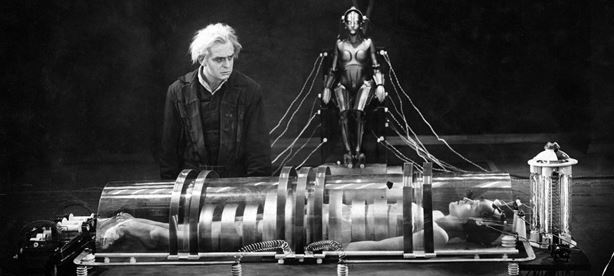Written By: Brandon Engel
Because their stories exist within the realm of imagination, sci-fi and fantasy movies allow directors to explore their creativity to the fullest. The future can be anything they imagine it to be.
Most of us are familiar with the works of Ridley Scott (Alien), James Cameron (The Terminator) and other visionary film directors. But they all owe a large debt to one of the true auteurs of the genre, German expressionist director Fritz Lang. Combining an enticing aesthetic sensibility with bold and mostly accurate predictions about the future, Lang’s films achieved widespread critical acclaim and are still widely studied and enjoyed by film aficionados to this day.
In 1927, Lang released perhaps his most well-known opus, the silent film Metropolis. This dystopian tale – the most expensive movie produced at the time – is a fully realized vision of a capitalist world gone amok. Wealthy elites disport themselves in frivolous pursuits while the bulk of the population works tirelessly without noticeably improving their lot. This seems quite applicable to today’s world, with growing income inequality in the United States and a concern about the disparity between the haves and have-nots.
Metropolis featured a videophone allowing people to view and chat with others in real-time, reminiscent of today’s Skype and other video chatting software. Metropolis also had a robot designed to look and act like a human, an innovation that we can probably expect to see in the real world within a decade or two. Indeed, we often use advanced technology today, such as home automation and security systems with artificial intelligence, that carry out complex tasks automatically after learning our habits. It’s merely in the area of making it appear and behave like a real human that we are only slightly lacking considering some android like bots are already being seen in prototype form around the world, quickly catching up with Lang’s vision.
Although considered by many to be narratively weaker than Metropolis, Woman in the Moon (1929) stands out for the number of details it got right about space travel. Produced 40 years before the first Apollo moon landing, it correctly envisaged the use of multi-stage booster rockets to achieve sufficient escape velocity from the earth’s gravity well, the pre-launch countdown and an accurate portrayal of what living in the weightlessness of space would be like. It’s no accident that Lang created a realistic depiction of space travel – he had on his staff Hermann Oberth as an adviser, one of the founders of modern rocketry, along with his assistant, a youthful Wernher von Braun.
Besides prognosticating events and technologies yet to come, Lang’s films are notable for the breadth of their artistic scope. Blessed with large budgets and a grandiose idea of what films should be like, he spared no effort in constructing beautiful sets and staging scenes involving the participation of hundreds of extras.
Of course, not even a genius like Fritz Lang could get everything right. His version of the moon was filled with gold, which becomes a major plot point in Woman in the Moon, and he thought that it had a breathable atmosphere. In Metropolis, the architecture consists of vast skyscrapers made of stone rather than glass or steel as is the case today. No less a critic than H.G. Wells wrote a scathing review of Metropolis in which he panned it as “silly” and derided it as containing “foolishness, cliché, platitude, and muddlement.” While part of the hostility he displayed could be attributed to a kind of backbiting envy on the part of a fellow futurist whose best times were probably past at that point, we must nevertheless recognize that Wells also knew what he was talking about when it came to painting future worlds.
The fact that Fritz Lang’s movies have endured and continue to elicit positive responses more than 80 years after they were made is the strongest indication that what he had to say about the future and technology still resonates today among those who care about these things. While he occasionally missed the mark a bit, his oeuvre is such that he’s comfortably ensconced in the ranks of all-time great filmmakers and futurists.
—
Writer Brandon Engel has made a name for himself submitting film-related essays to various websites, and is a frequent contributor to PopcornMonster.com. For more of his work you can visit the following links:
Clones: Coming to a Future Near You
My Bloody Valentine – 5 Horror Films for Heartless Romantics
The Blackest of Fridays: Top 5 Yuletide Viewing Oddities
John Carpenter: A Master of the Macabre










